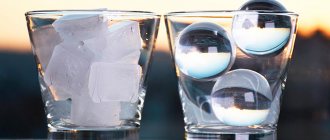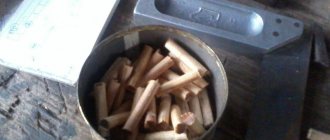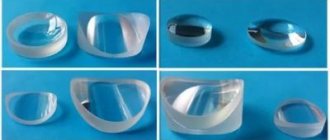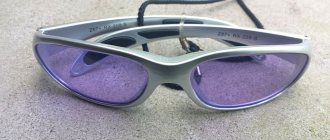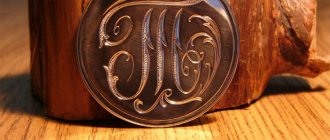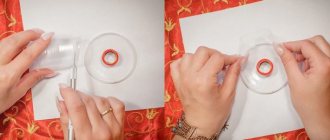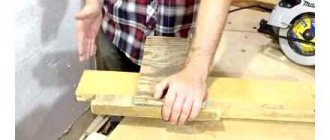You can make a lava lamp with your own hands using substances characterized by different densities. There are several instructions that allow you to create a structure with a liquid that simulates lava, and it is important to make sure that the device is safe during operation. This product has an attractive appearance, which is why it is popular. However, the lava lamp is characterized by conditional restrictions on use. It is advisable to install it where the interior is made in the appropriate style.
Operating principle
Let's consider the design of the device. The sealed container is filled with two dissimilar substances - paraffin, which has a semi-liquid state, and glycerin. Under natural conditions and normal room temperature, paraffin sinks in glycerin. An incandescent lamp located on the lower flange of the base of the device heats the layers of the substance to the desired temperature.
When the lamp is turned on, the paraffin softens due to heat. It becomes lighter, as a result of which it slowly moves up the cylinder of the device body. The process of changing the temperature regime is carried out unevenly. As the temperature fluctuates, the paraffin floats up chaotically. Moving towards the surface of the liquid, it moves away from light and heat.
Schematic diagram of the functioning of a lava lamp
Having reached the surface, the paraffin hardens, stops moving, and then slowly sinks. Being near the bottom, the light bulb heats it up again. The whole process is repeated again. Air bubbles throughout the thickness of the multi-colored illuminated liquid are formed at different speeds, mix, and take on bizarre shapes and sizes.
The lava lamp has gained immense popularity among aesthetes all over the world. It is now sold in every gift shop on the planet. Instead of paraffin, natural wax is often used.
Lava lamp color options
This product is an indispensable attribute of every children's bedroom. The illuminated layers move slowly, smoothly and beautifully along the transparent cylinder of the flask, reminiscent of multi-colored volcanic lava. Contemplating the spectacle of the lava working, a person plunges into a state of relaxation. At the same time, his body cells relax as much as possible, and the body gets the opportunity to fully relax, charging with positive energy for the future.
The light bulb that illuminates the moving masses of paraffin along with glycerin can be of different power. The main requirement is to calculate its characteristics so as to prevent the ignition of nearby objects. When lava functions, the entire interior space of the room comes to life. All surrounding objects become fabulous, shimmering with various exotic colors.
Large table lava lamp
How to make an aroma lamp at home
After reading articles about the benefits of aromatherapy and its magical effect on humans, people run to the store to buy an aroma lamp. However, it soon turns out that the presented models are either too expensive, or do not suit the interior of your apartment, or simply seem unsafe. But you should always remember that making an aroma lamp with your own hands is not difficult. Below are several methods for making it.
From tin cans
Required items:
- Tin can with a smooth top.
- Sharp knife
- Candle
- Hemispherical dishes (for example, a bowl or ladle)
- Various decorations (shells, sparkles, etc.).
- Glue
How to make an aroma lamp with your own hands:
- Using a knife, cut a small hole in the side of the jar through which you can conveniently place a candle.
- Using a nail, awl or knife, make holes in the jar to allow air to enter better.
- Place a container of suitable diameter on the open top.
- Using glue and trinkets we decorate the aroma lamp.
- All that remains is to light a candle, pour essential oils into the dishes and enjoy the fragrance.
From clay
Required items:
- Special clay for modeling
- Knife or toothpick
- Foil
- Candle
- Water and paints
How to make an aroma lamp from clay:
- Place foil on the work table and start kneading the clay.
- Roll out the clay into a flat cake (about 1 cm in height) and give it the desired shape (the classic version is a circle).
- Roll the clay sausages and lay them out in layers until they reach the desired height.
- Level the surface of the product using a knife and water.
- After leveling, you can create relief patterns on the aroma lamp.
- Place the product outside, preferably in sunny weather, so that it dries faster.
- Then place the aroma lamp in the oven (every 15 minutes you need to increase the temperature by 30˚ and eventually reach 200˚).
- Once your work is dry and completely hard, you can paint different designs and patterns on it.
From a glass jar
Required items:
- Transparent glass jar
- Wick
- Awl
- Paraffin oil
- Various aromatic plants (berries, nuts, pine cones, etc.)
Manufacturing procedure
- Place all the necessary spices in a jar and fill them with paraffin oil.
- Using an awl, make a hole in the roof and stretch the wick so that it sinks 2/3 into the oil.
- Screw the lid on tightly and light the wick.
From orange
Required items:
- Big orange
- Tablet candle
- Knife
How to make an aroma lamp at home from an orange:
- Cut the fruit in half and, using a knife, completely remove all the pulp.
- In one of the hemispheres, cut a star in the center (or another shape of your choice).
- Apply aromatic oil to the entire inner surface of the orange.
- Place a candle in the half of the fruit where there is no carved figure and cover it with the one where there is one.
From a light bulb
Required items:
- Incandescent light bulb
- Screwdriver
- Coin with a face value of 5 rubles
- Cold welding
- Medical alcohol
- Wick
- Silicone
- Knife and hammer
Aroma lamp at home from a light bulb - manufacturing procedure:
- Using a hammer, knock out the core from the base and then disassemble the light bulb using a screwdriver. As a result, there should be nothing left inside it.
- We glue a coin onto the top of the light bulb with silicone, which will become the base.
- Pour alcohol and essential oils into the flask.
- We thread a wick into the hole in the base and cover the edges with cold welding.
Electric aroma lamp
Aroma lamps that run on electricity emit the purest aroma of oils, since there is no paraffin smell.
Required items:
- Cylindrical pipe without bottom
- Dishes for aromatic oils
- Chuck and stand for it
- 15 watt light bulb
- Cable with plug
Electric aroma lamp at home - manufacturing procedure:
- Assemble the cable, plug and socket into a single unit and screw in the light bulb.
- Strengthen the structure on the stand, place the cylinder on top.
- Place suitable utensils on the cylinder.
By the way: if you need to quickly conduct an aromatherapy session, then use the following method: pour water and essential oil (10 ml per 1 drop) into a ceramic bowl and place it on a hot radiator. You can also simply put a piece of cloth on the battery that has been soaked in a solution of aromatic oils.
In fact, if you have a well-developed imagination and ingenuity, then there may be an infinite number of options for how to make an aroma lamp at home. The main thing is to remember safety precautions and do not get carried away with long sessions.
Story
A “lava lamp” is a lamp with bubbles floating inside. These lamps, with their bright colors and whimsical bubble movements, gained enormous popularity in Britain in the 1960s. Britain's "Love Generation" grasped the connection between the unpredictable nature of lava flow and the spirit of those decades. This was the time of Carnaby Street, the Beatles and the beginning of space exploration. The first model was made in the form of a rocket and was called Astro Lamp.
After Beatles drummer Ringo Starr bought one of these lamps, its sales began to number in the millions. And they grew even more after Ringo Starr starred in the popular British film Doctor Who. At the time, advertising proclaimed the lamp to be a wonderful gift “for your relatives, your friends, and, heck, yourself.”
The idea for its creation is attributed to Edward Craven Walker, who in 1948 noticed an egg timer in a bar in Hampshire (England). The timer was a glass vessel with water and a piece of wax
This vessel was placed in a pan of boiling water where the egg was boiled. When melted, a piece of wax began to move quickly in the bottle, indicating that the egg was boiled
The timer was a glass vessel with water and a piece of wax. This vessel was placed in a pan of boiling water where the egg was boiled. When melted, a piece of wax began to move quickly in the bottle, this indicated that the egg was boiled.
The device was patented by a man named Dunnett, who had already died. Walker thought about the possibilities of further development of this design. The product he introduced included a light bulb that provided high heat to melt the wax. He began work on this project in the second half of the 50s with the Crestworth company located in Dorset, England.
In Walker's final design, the mixture that was placed in the vessel consisted of oil, wax, and more than a dozen other ingredients. The composition of this mixture has been patented. The mixture was placed in a glass vessel on a gold-plated stand. Available colors for "lava" included red or white, and for liquid, yellow or blue.
In 1963, Walker created a lamp manufacturing plant in the English city of Poole called Crestworth, Ltd. The following year, at an exhibition in Hamburg, American executives bought the rights to manufacture them in North America.
They began selling the Lava Lite through their Lava Brand Motion Lamp company in Chicago, which later became known as Lava Manufacturing Corp. Within a few years, sales exceeded seven million units worldwide.
Sales began to slow in the 70s, but Walker continued to control the business into the 80s. In 1995, the business was bought by an entrepreneur named Cressida Granger for her company Mathmos. Mathmos restored the popularity of lava lamps, whose sales grew from about 2,500 units per year in the 1980s to more than 800,000 in the late 1990s.
Mathmos is the only official manufacturer of Lava Lamp in the UK. And to this day, despite the decline of British manufacturing, with many well-known brands disappearing or moving production to countries with cheaper labor costs, Mathmos remains in its factory in the south-west of the UK, still using the famous proven Craven-Walker formula.
What is good about a homemade lamp?
If you decide to make a sconce or floor lamp with your own hands, you can be sure that it will add uniqueness to the interior of your apartment and make it feel warm and cozy at home.
In addition, decorative elements made with your own hands will significantly save your budget and use things that, at first glance, are unnecessary. In fact, you can buy recessed lights right away.
A handmade lighting fixture can reveal your taste preferences and character traits.
The choice of materials for work is huge: it can be made from glass, wood, plastic, cardboard and other materials that can be found in every home.
Take a look at the photo of the lamp you made yourself! There are a great many ideas for manufacturing and depend solely on your capabilities. Imagine and experiment and try to create something amazing.
How to use?
The device is easy to use – just plug it into a power outlet. After power is applied, the incandescent light bulb turns on, glycerin and paraffin heat up. This product works continuously for 8-10 hours. But if during operation it is noticed that paraffin accumulates at the bottom of the flask or the bubbles have become too small, there is only one conclusion - the product has overheated. To restore the normal operation of the product, the device is disconnected from the power supply for an hour. This is necessary to allow the liquids to cool.
Explanation: for the first time, it will take 2.5 - 3 hours to warm up the paraffin, but if the paraffin has stuck to the base or top, and after an hour and a half of using the item nothing has changed, the product must be carefully rotated several times around its axis.
Correct operation includes:
- installing the product on a solid and level surface;
- installing an incandescent light bulb strictly in the center;
- the average room temperature is 20-25 degrees. If the room temperature is low, the paraffin will not heat up properly;
- cleaning the surface of the flask with a soft cloth, using a gentle glass cleaner;
- timely shutdown. The device can work for a maximum of about 20 hours in a row, but then overheating will become noticeable even to the naked eye;
- replacing burnt-out lamps with A-15 watt or A-40 watt lamps;
- a full warm-up cycle every 2-3 months.
A little history
Today's lamps come in a variety of colors, models and sizes. Prices for unusual decorative lamps vary depending on the country of manufacture and the individual parameters of the product. Teenagers especially like lava lamps for their catchy design, but few of them know that the gadget that is fashionable today is not a modern innovation at all.
The idea of creating a lava lamp belongs to Edward Craven Walker, an engineer from Great Britain. It was he who, in 1963, conducted an experiment on mixing oil and paraffin with subsequent heating of the mixture. The effect shocked the inventor with its beauty and he came up with a unique lamp, giving it the name “Astro Lamp”.
Two years later in Hamburg, two American businessmen from Chicago became interested in an invention with a liquid inside a flask, presented at a trade show. They bought a patent for a lamp with bubbles, called their purchase “Lava Lamp” and put its production on stream.
In the 90s the lamps became widely known in our country, where the peak of the spread of the psychedelic subculture was just observed, and everything unusual caused great excitement and interest.
The first lamps were made mainly with a bright yellow or blue liquid in a flask, and inside red and white paraffin “clouds” formed bizarre shapes. The development of technical capabilities has made it possible to launch the production of lamps in a wide variety of shapes and colors of the contents of the vessel. But their essence remained unchanged - the magic of a small Universe, enclosed within the framework of transparent glass.
Other manufacturers
These manufacturers have only one product in their range.
Manufacturer Orient
Model - PUL1020:
- flask - high-strength glass;
- base and top cap - metal;
- bulb type: R39(E14) 30W;
- The total size of the lamp is 20 cm.
A Russian manufacturer that makes flasks containing glitter so that they shimmer when turned on.
Manufacturer Start
Model – Start Lava:
- flask - high-strength glass;
- base and top cap - metal;
- bulb type: R39(E14) 30W;
- The total size of the product is 40 cm.
The advantage of this lava lamp is its low price.
Manufacturer Winmaxent
- flask - high-strength glass;
- base and top cap - metal;
- bulb type: R39(E14) 30W;
- The total size of the device is 37 cm.
A Chinese-made lamp that does not have any special features, but is quite suitable for the bedroom and living room.
A lava lamp is a universal lamp or relaxation night light. Turn on the magic lamp and enjoy its unusual effects!
Decorative product and its components
Components of a lava lamp:
- glass flask;
- liquids: paraffin and glycerin;
- incandescent lamp under the cylinder;
- base (in which the base and incandescent lamp are located);
- decorative lid (to prevent liquids from leaking).
Precautionary measures
A lava lamp, like any other device powered by electricity, requires precautions to be taken during its operation. To avoid harm to health and damage to the lamp, remember the following:
- It is unacceptable to transport the device in cold weather and store it at low temperatures (less than +5 C).
- The lamp should not be exposed to direct sunlight. Overheating the product can cause the wax to fade and damage the device.
- It is prohibited to shake the lamp connected to the network, move it, drop it, or perform any active manipulations with it. If you do not want the liquid in the flask to become cloudy, leak out or explode.
- Do not use additional light or heat sources to heat the device. An incandescent light bulb is sufficient to ensure normal operation of the device.
- According to the instructions, only incandescent light bulbs can be replaced. The rest of the design is not allowed to be changed.
- To maintain the integrity of the device and your own safety, it is recommended to act in accordance with the operating instructions for the lava lamp.
Often, neglect of safety rules and manufacturer's instructions leads to product failure. Warranty obligations do not apply to damage caused by the consumer.
